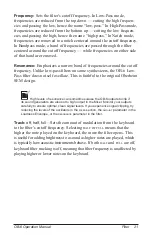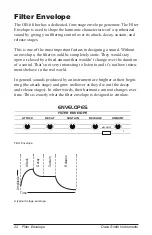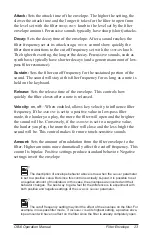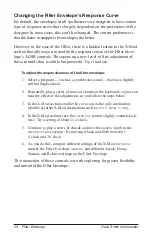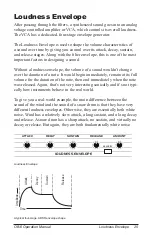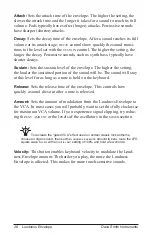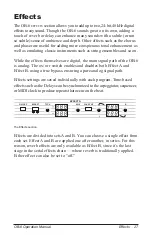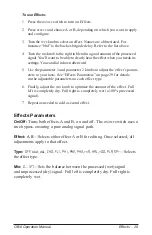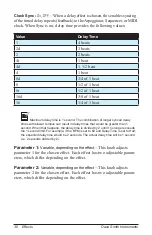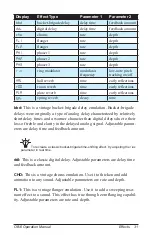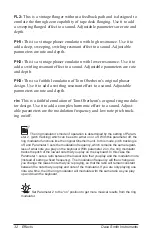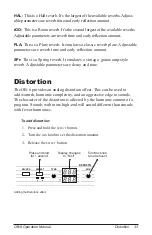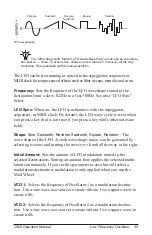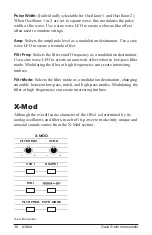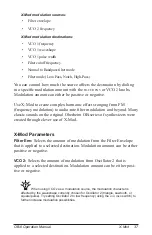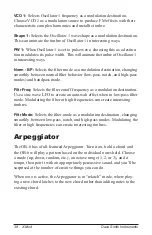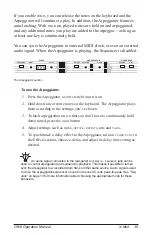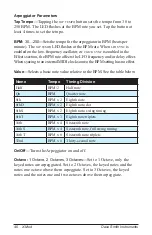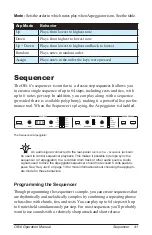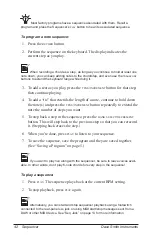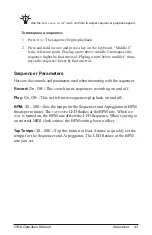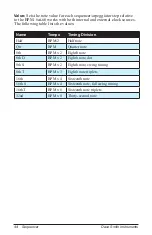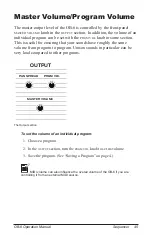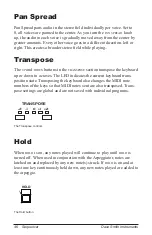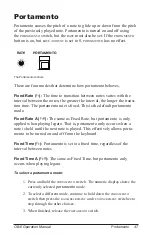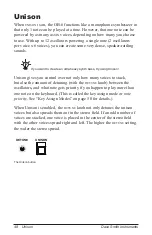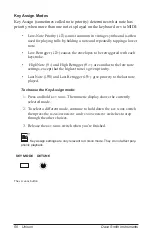
35
OB-6 Operation Manual
Low Frequency Oscillator
Square
Random
Sawtooth
Reverse
Sawtooth
Triangle
0
LFO waveshapes
The OB-6 has a sixth “hidden” LFO waveshape that you can use as a modula-
tion source — noise. To access this, choose
random
then turn
frequency
all the way
clockwise. This generates a white noise waveform.
The LFO can be free-running or synced to the arpeggiator, sequencer, or
MIDI clock for tempo-synced effects such as filter sweeps, tremolo, and so on.
Frequency:
Sets the frequency of the LFO waveshape routed to the
destination from a slow .022Hz to a fast 500Hz. See also “LFO Sync”
below.
LFO Sync:
When on, the LFO synchronizes with the arpeggiator,
sequencer, or MIDI clock. By default, the LFO wave cycle is reset when
you press a key (but is not reset if you press a key while other notes are
held).
Shape:
Sine, Sawtooth, Reverse Sawtooth, Square, Random
—The
wave shape of the LFO. A sixth waveshape, noise, can be generated by
selecting
random
and turning the
frequency
knob all the way to the right.
Initial Amount:
Sets the amount of LFO modulation routed to the
selected destinations. Setting an amount here applies the selected modu-
lation continuously. If you set this parameter to zero but still select a
modulation destination, modulation is only applied when you use the
Mod Wheel.
VCO 1:
Selects the frequency of Oscillator 1 as a modulation destina-
tion. Use a sine wave as a source to create vibrato. Use a square wave to
create trills.
VCO 2:
Selects the frequency of Oscillator 2 as a modulation destina-
tion. Use a sine wave as a source to create vibrato. Use a square wave to
create trills.
Содержание ob-6
Страница 1: ...Operation Manual...
Страница 2: ......
Страница 10: ......
Страница 94: ...84 Appendix C MIDI Implementation Dave Smith Instruments...
Страница 95: ......

